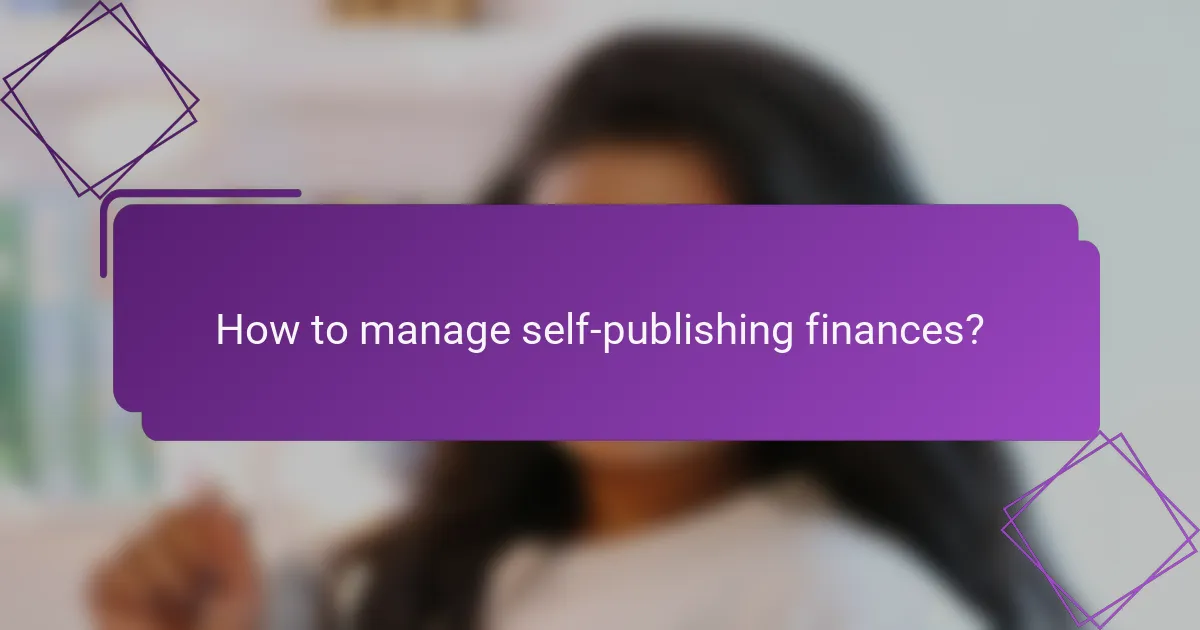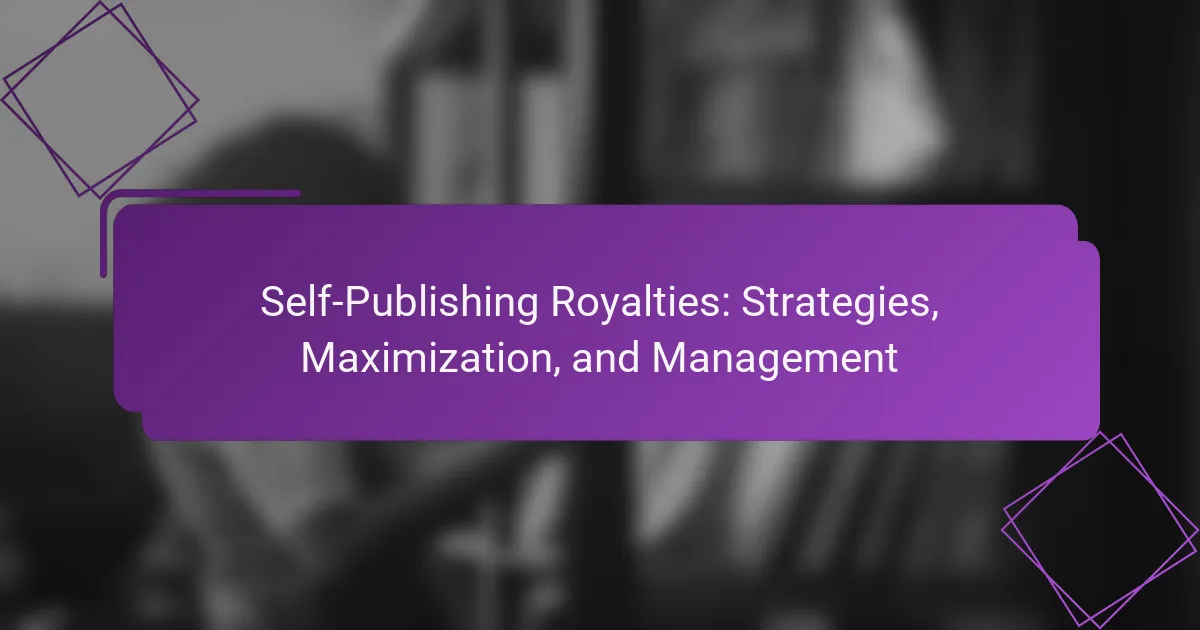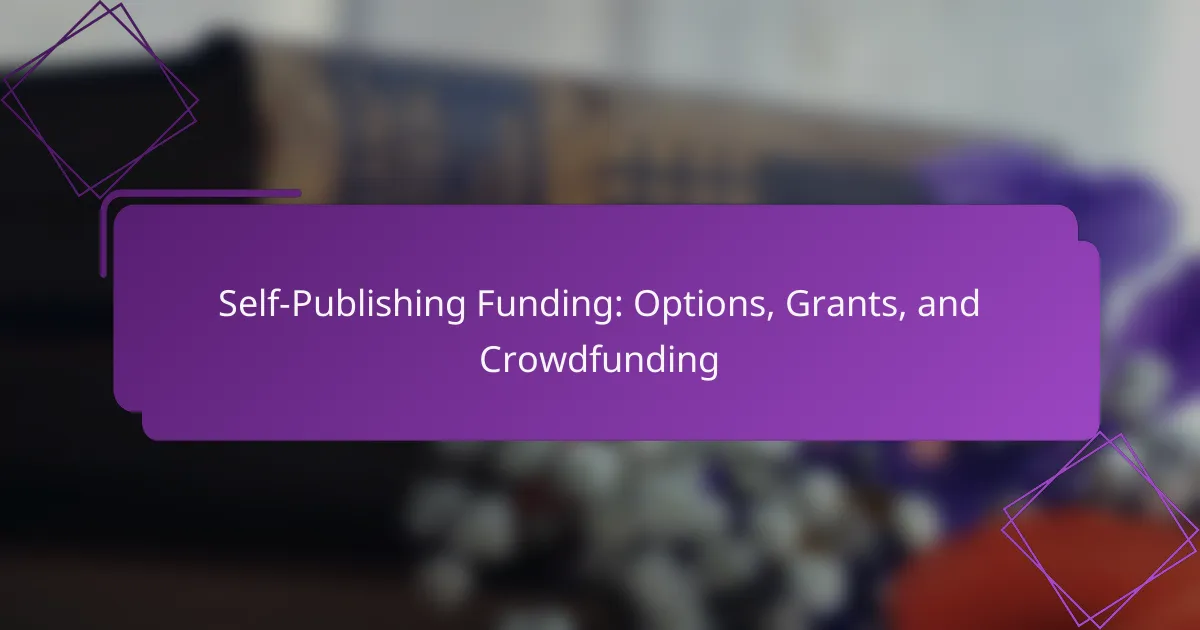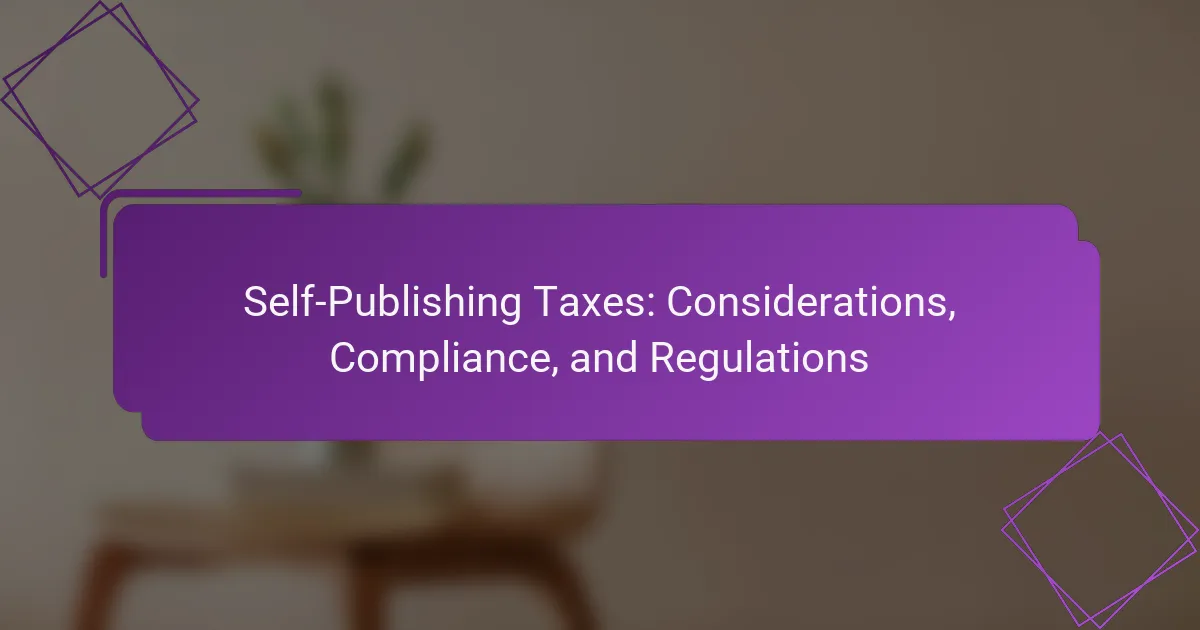Self-publishing offers authors the opportunity to earn royalties through various platforms, but maximizing these earnings requires strategic planning. By leveraging multiple distribution channels, setting competitive prices, and engaging with readers, authors can enhance their visibility and sales. Understanding the nuances of each platform’s royalty structure and optimizing marketing efforts are essential for effective management of self-publishing ventures.

How to maximize self-publishing royalties?
To maximize self-publishing royalties, authors should adopt a multi-faceted approach that includes utilizing various distribution platforms, setting competitive prices, and actively engaging with their audience. Implementing effective marketing strategies and optimizing book metadata are also crucial for enhancing visibility and sales.
Utilize multiple distribution platforms
Using several distribution platforms can significantly increase your book’s reach and potential royalties. Consider popular options like Amazon Kindle Direct Publishing, Apple Books, and Barnes & Noble Press, as well as niche platforms that cater to specific genres or audiences.
Each platform has its own royalty structure, so evaluate which ones offer the best terms for your book. For example, Amazon typically offers 35% to 70% royalties depending on pricing, while other platforms may have different rates. Diversifying your distribution can help you tap into various reader markets.
Set competitive pricing strategies
Establishing a competitive pricing strategy is essential for maximizing royalties. Research similar titles in your genre to determine a price range that appeals to readers while still providing a fair return. Many self-published authors price their eBooks between $2.99 and $9.99, as this range often yields higher royalties on platforms like Amazon.
Consider running limited-time promotions or discounts to attract initial readers and boost sales. However, avoid pricing your book too low, as this can devalue your work and lead to lower perceived quality.
Leverage marketing and promotion
Effective marketing and promotion can significantly enhance your book’s visibility and sales. Utilize social media platforms, email newsletters, and author websites to connect with potential readers. Consider investing in targeted ads on platforms like Facebook or Amazon to reach specific demographics.
Participating in book promotion sites or offering free or discounted copies during launch periods can also help generate buzz and reviews, which are critical for long-term sales. Building a solid marketing plan can lead to sustained interest and increased royalties over time.
Engage with your audience
Engaging with your audience fosters loyalty and encourages repeat purchases. Use social media to interact with readers, respond to comments, and share insights about your writing process. Consider hosting virtual events or Q&A sessions to create a personal connection.
Encouraging readers to leave reviews can also enhance your book’s credibility and visibility. A strong relationship with your audience can lead to word-of-mouth referrals, further boosting your royalties.
Optimize book metadata
Optimizing your book’s metadata is crucial for discoverability in online searches. Ensure that your title, subtitle, and description are clear and include relevant keywords that potential readers might use. This helps improve your book’s ranking on platforms like Amazon.
Additionally, select appropriate categories and tags for your book to reach the right audience. Regularly updating your metadata based on market trends can also help maintain visibility and attract new readers, ultimately maximizing your royalties.

What are the best platforms for self-publishing?
The best platforms for self-publishing include Amazon Kindle Direct Publishing, IngramSpark, Kobo Writing Life, and Draft2Digital. Each platform offers unique features, distribution options, and royalty structures that can significantly impact an author’s earnings and reach.
Amazon Kindle Direct Publishing
Amazon Kindle Direct Publishing (KDP) is one of the most popular self-publishing platforms, allowing authors to publish eBooks and paperbacks directly to Amazon. KDP offers a royalty rate of up to 70% for eBooks priced between $2.99 and $9.99, making it an attractive option for many writers.
Authors can easily upload their manuscripts, set their prices, and manage their listings. However, KDP is primarily focused on the Amazon ecosystem, which may limit exposure to readers on other platforms.
IngramSpark
IngramSpark is a robust platform for authors looking to distribute both print and eBooks globally. It provides access to a vast network of retailers and libraries, which can enhance visibility and sales potential. IngramSpark typically charges setup fees, but authors can benefit from a wide distribution reach.
Royalty rates vary based on pricing and distribution choices, often ranging from 40% to 60%. Authors should consider the upfront costs and the potential for broader market access when choosing IngramSpark.
Kobo Writing Life
Kobo Writing Life is a user-friendly platform that allows authors to publish eBooks and reach readers in over 190 countries. Kobo offers a royalty rate of 70% for eBooks priced above $1.99, which is competitive with other platforms.
One of the key advantages of Kobo is its strong presence in international markets, particularly in Canada and Europe. Authors can also take advantage of promotional tools to boost visibility and sales.
Draft2Digital
Draft2Digital is a distribution service that simplifies the self-publishing process by allowing authors to publish eBooks across multiple platforms, including Amazon, Apple Books, and Barnes & Noble. It does not charge upfront fees, taking a small percentage of royalties instead.
With Draft2Digital, authors can easily format their manuscripts and access various promotional tools. This platform is ideal for those who want to maximize their reach without the hassle of managing multiple accounts.

What factors affect self-publishing royalties?
Self-publishing royalties are influenced by several key factors, including the platform used, the pricing of the book, the volume of sales, and the geographic distribution of the audience. Understanding these elements can help authors maximize their earnings and manage their self-publishing ventures effectively.
Royalty percentage by platform
Different self-publishing platforms offer varying royalty percentages. For instance, Amazon Kindle Direct Publishing typically provides authors with royalties ranging from 35% to 70%, depending on the book’s price and distribution choices. Other platforms like Smashwords or Draft2Digital may offer similar or slightly different rates, so it’s essential to compare options before deciding where to publish.
Authors should also consider any additional fees that might affect their overall earnings. For example, some platforms may charge for distribution to certain retailers, which can reduce the effective royalty percentage.
Book pricing
The price at which a book is sold significantly impacts the royalties earned. Setting a competitive price can attract more readers, but authors must balance this with the need to earn a reasonable return. Typically, eBooks priced between $2.99 and $9.99 qualify for higher royalty rates on platforms like Amazon.
Authors should regularly review pricing strategies based on market trends and reader feedback. Experimenting with promotional pricing or discounts can also help boost sales volume, which in turn can enhance overall earnings.
Sales volume
Sales volume directly correlates with total royalties earned. Higher sales lead to greater income, making it crucial for authors to implement effective marketing strategies. Utilizing social media, email newsletters, and author websites can help increase visibility and drive sales.
It’s important to track sales data over time to identify trends and adjust marketing efforts accordingly. Authors should aim for consistent engagement with their audience to maintain and grow their sales volume.
Geographic distribution
The geographic distribution of readers can affect royalties, especially if the book is sold internationally. Different countries may have varied pricing structures and royalty rates, impacting overall earnings. For example, selling in the European market may involve different VAT regulations that can affect final prices and royalties.
Authors should consider global distribution options to reach a wider audience. Platforms like Amazon allow authors to select specific regions for sales, which can help maximize royalties based on local market demands and preferences.

How to manage self-publishing finances?
Managing self-publishing finances involves tracking income and expenses effectively to ensure profitability. By implementing structured financial strategies, authors can maximize their royalties and maintain a clear overview of their financial health.
Track income and expenses
Tracking income and expenses is crucial for self-publishing authors to understand their financial landscape. This involves recording all revenue from book sales, royalties, and any other income sources, alongside expenses such as editing, cover design, marketing, and distribution costs.
Consider using a simple spreadsheet or a dedicated financial journal to log these figures regularly. Aim to update your records at least monthly to avoid overlooking any financial details, which can lead to mismanagement or unexpected losses.
Utilize accounting software
Utilizing accounting software can streamline the financial management process for self-publishing authors. Programs like QuickBooks or FreshBooks can automate income tracking, expense categorization, and even tax calculations, saving time and reducing errors.
When choosing software, look for features that allow for easy integration with your sales platforms and provide detailed reporting options. This will help you analyze your financial performance and make informed decisions about future projects and investments.



